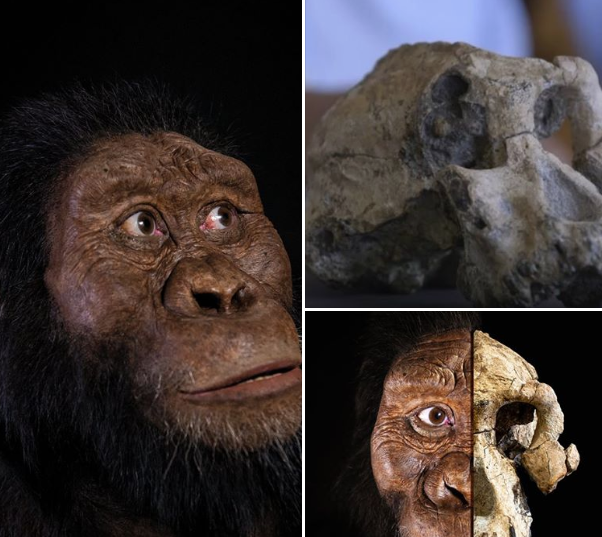Archaeologists Discover 3.8 Million-year-old Human Ancestor in Ethiopia - ENA English
Archaeologists Discover 3.8 Million-year-old Human Ancestor in Ethiopia

Addis Ababa August 29/2019 A "game changer" 3.8-million-year-old skull of an early human is discovered in Afar regional state, archaeologists announced.
According to Phys.org, the 3.8 million-year-old fossil cranium of Australopithecus anamensis represents a time interval between 4.1 and 3.6 million years ago.
The Woranso-Mille project has been conducting field research in the central Afar region of Ethiopia since 2004.
Working for the past 15 years at the site, the team discovered the cranium or also known as "MRD" upper jaw, by Ali Bereino who is a local Afar worker on February 10, 2016 at a locality known as Miro Dora, Mille district of the Afar Regional State.
"I couldn't believe my eyes when I spotted the rest of the cranium. It was a eureka moment and a dream come true," Yohannes Haile-Selassie of the Cleveland Museum of Natural History, who is among the scientists who discovered the first cranium of Australopithecus anamensis, said.
Yohannes added that "this is a game changer in our understanding of human evolution during the Pliocene."
Stephanie Melillo of the Max Planck Institute for Evolutionary Anthropology also said, "It is good to finally be able to put a face to the name."
"Features of the upper jaw and canine tooth were fundamental in determining that MRD was attributable to A. anamensis," Melillo added.
Beverly Saylor of Case Western Reserve University and her colleagues determined the age of the fossil as 3.8 million years by dating minerals in layers of volcanic rocks nearby.
"Until now, we had a big gap between the earliest-known human ancestors, which are about 6 million years old, and species like 'Lucy,' which are two to three million years old. One of the most exciting aspects of this discovery is how it bridges the morphological space between these two groups," Melillo stated.
Yohannes said on his part, "MRD has a mix of primitive and derived facial and cranial features that I didn't expect to see on a single individual."
"MRD lived near a large lake in a region that was dry. We're eager to conduct more work in these deposits to understand the environment of the MRD specimen, the relationship to climate change and how it affected human evolution, if at all," Naomi Levin, a co-author on the study from University of Michigan pointed out.
Researchers added that the new discovery changes their understanding of the evolutionary process and brings up new questions.
It was learned that facial features in the species were never-before-seen by the researchers due to the cranium's rare near-complete state.